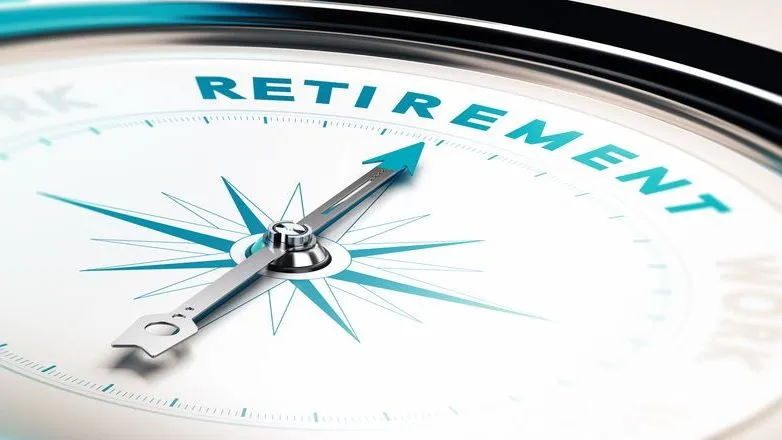If you’re aiming to retire in five years, now is the time to get your financial plan firmly in place. The specific steps you’ll need to take will depend on factors like your age, current savings, expected retirement expenses and overall financial goals. Whether retirement is just around the corner or still several years away, reaching that milestone usually requires consistent saving and careful planning.
A financial advisor can help you plan for retirement, whether it’s years or decades down the road. Connect with an advisor for free.
Deciding When You Want to Retire
The first step in preparing to retire within five years is deciding the age at which you want to retire. This will determine how long your savings may need to last, and whether you have enough savings to retire in the first place.
Estimating your life expectancy is a critical part of this process. Depending on how long you’ll live, you could be vulnerable to outliving your savings. This is often called longevity risk. On the other hand, overestimating might cause you to delay retirement unnecessarily or compromise your quality of life.
For instance, if you plan to retire at 70, your retirement plan should ideally cover at least 20 to 25 years of living expenses. However, retiring early, such as at 45 or 50, requires preparing for a much longer retirement horizon and building a significantly larger nest egg.
Review Your Savings
As retirement nears, reviewing and maximizing your savings becomes more important than ever. The final years before leaving the workforce offer a critical window to boost your retirement accounts and strengthen your financial foundation.
This is the time to prioritize increasing your contributions, especially by taking advantage of catch-up contributions if you’re eligible. (We’ll cover the current contribution limits below.)
Even modest increases in your monthly savings can make a meaningful difference. For example, saving an extra $500 per month for the five years before retirement adds up to $30,000, not including any potential investment gains. That additional savings can serve as a valuable cushion for unexpected expenses or allow for greater flexibility and enjoyment during retirement.

Maximizing Retirement Account Contributions
One of the most effective ways to maximize savings in the years leading up to retirement is to take full advantage of retirement accounts, such as 401(k)s and IRAs.
401(k)s are employer-sponsored retirement plans that allow employees to save and invest a portion of their paycheck before taxes are taken out. Many employers offer matching contributions, which can significantly boost your savings. In 2026, the contribution limit for 401(k)s is $24,500.
IRAs, or individual retirement accounts, are personal savings plans that also offer tax advantages. There are two main types of IRAs: traditional and Roth. With a traditional IRA, contributions may be tax-deductible and taxes are paid upon withdrawal in retirement. Roth IRAs, on the other hand, are funded with money that’s already been taxed. In return, you benefit from tax-free growth and tax-free qualified withdrawals in retirement. In 2026, the contribution limit for IRAs is $7,500.
Here’s how to maximize your retirement account contributions:
- Contribute enough to your 401(k) to take full advantage of any employer match.
- Aim to max out your 401(k) contributions, if possible.
- If you have additional funds to save, consider opening and contributing to an IRA (which may not be tax-deductible, but will still offer tax-deferred growth).
- Automate your contributions to ensure you’re consistently saving each month.
- Increase your contributions each year, especially if you receive a raise or bonus.
Take Advantage of Catch-up Contributions
For individuals ages 50 or older, you have an additional opportunity to boost retirement savings through catch-up contributions.
In 2026, the catch-up contribution limit for 401(k)s is $8,000 (up from $7,500 in 2025), and the catch-up limit for IRAs is $1,100 (up from $1,000 in 2025). This means that if you’re 50 or older, you can contribute a total of $32,500 to your 401(k) and $8,600 to your IRA.
Since 2025, those between ages 60 and 63 can contribute even more to their 401(k)s—up to $11,250 in catch-up contributions—bringing their total possible contribution to $35,750, if the plan allows.
Determine How Much Income You’ll Have
If retirement is just five years away, you should have a general sense of how much money you’ll have saved by then. By combining your savings estimate with your expected Social Security benefit and other sources of retirement income, you can calculate how much total income you can expect on an annual basis when you stop working.
To arrive at that estimate, you’ll want to account for the various streams of income that you expect to have in retirement. They may include:
- Social Security: Social Security benefits are a primary income source for many retirees. Your benefits depend on your earnings history and the age at which you start claiming them. Delaying benefits until age 70 can result in higher monthly payments, while claiming as early as 62 will reduce your monthly payments over your lifetime by as much as 30%. (You can use our Social Security calculator to estimate your benefits.)
- Retirement account withdrawals: Withdrawals from 401(k)s, IRAs and other retirement accounts will likely constitute a significant portion of your retirement income. The 4% rule is a common and simple withdrawal strategy that suggests withdrawing 4% of your savings in your first year of retirement and then adjusting your withdrawals in subsequent years for inflation.
- Pension payments: If you have a pension, it may provide a steady income stream during retirement. The amount, which typically is not indexed for inflation, depends on your years of service and salary history.
- Annuity payments: Annuities can provide guaranteed income for life or a specified period, helping to ensure you don’t outlive your savings.
- Rental income: If you own rental properties, the income generated can supplement your retirement funds.
- Other savings: Personal savings and other investments can be tapped into as needed, providing flexibility in your retirement income plan.
Project Your Expenses
Making retirement a reality in as few as five years will also require you to have a firm understanding of how much you expect to spend in your golden years. This number will vary based on where you live, your desired lifestyle and your pre-retirement spending levels.
For example, some experts recommend replacing between 70% and 90% of your pre-retirement income to maintain your current standard of living.
Housing, utilities, groceries and leisure activities will make up a significant portion of your budget. However, retirees may also face increased healthcare expenses, as they are more likely to experience health issues and require medical care. It’s important to carefully consider how your spending habits may shift in retirement and plan accordingly to ensure you have sufficient funds to cover your needs.
The healthcare consideration is especially important for people who retire before Medicare eligibility kicks in at age 65. For example, retiring at age 50 means you’ll have to secure private health insurance for 15 years or pay out of pocket. Either way, you’ll need to factor these costs into your spending plan.
Don’t forget to prepare for inflation, either, as it can undercut your purchasing power and reduce the value of your fixed income over time. One way to do this is by diversifying your income sources with investments that have the potential to outpace inflation. These can include equities, inflation-adjusted annuities and real estate.
Our retirement calculator can give you an idea of whether or not you’re on track.
Retirement Planning in Action
To show the importance and process of creating a retirement plan, let’s consider a 60-year-old man who plans to retire in five years at the age of 66. While the Social Security Administration’s life expectancy calculator indicates that a 60-year-old man, on average, can expect to live to age 83, this individual rounds up and assumes a life expectancy of 85.
Retirement Budget Example
| Income Sources After Tax | Estimated Expenses |
|---|---|
| Social Security: $2,500 per month ($30,000 annually) starting at 65. | Housing and utilities: $24,000 |
| 401(k) withdrawals: $1,500 per month ($18,000 annually) based on his savings | Groceries and dining: $15,000 |
| Pension payments: $1,000 per month ($12,000 annually) | Health insurance and medical costs: $15,000 |
| Rental income: $1,200 per month ($14,400 annually) from a rental property | Travel and leisure: $10,000 |
| Miscellaneous: $6,000 | |
| Total Annual Income: $74,400 | Total Annual Expenses: $70,000 |
With an annual income of $74,400 and estimated expenses of $70,000, he would have a surplus of $4,400 each year, providing a small cushion for unexpected costs or additional savings growth.
Bottom Line

Retiring in five years may be an achievable goal with careful planning and disciplined saving. By understanding your life expectancy, maximizing savings, estimating your income, projecting expenses and creating a detailed plan, you can potentially enjoy a financially secure and fulfilling retirement.
Retirement Planning Tips
- Finding a financial advisor doesn’t have to be hard. SmartAsset’s free tool matches you with vetted financial advisors who serve your area. You can have a free introductory call with your advisor matches to decide which one you feel is right for you. If you’re ready to find an advisor who can help you achieve your financial goals, get started now.
- Required minimum distributions (RMDs) play an important role in a lot of people’s plans for retirement. This mandatory withdrawals from pre-tax retirement accounts start at age 73 (or 75 for people who turn 74 after 2032) and failing to take them can result in penalties. SmartAsset’s RMD calculator can help you estimate how much your first RMD will be and when you’ll need to take it.
Photo credit: ©iStock.com/skynesher, ©iStock.com/olm26250, ©iStock.com/Pekic
